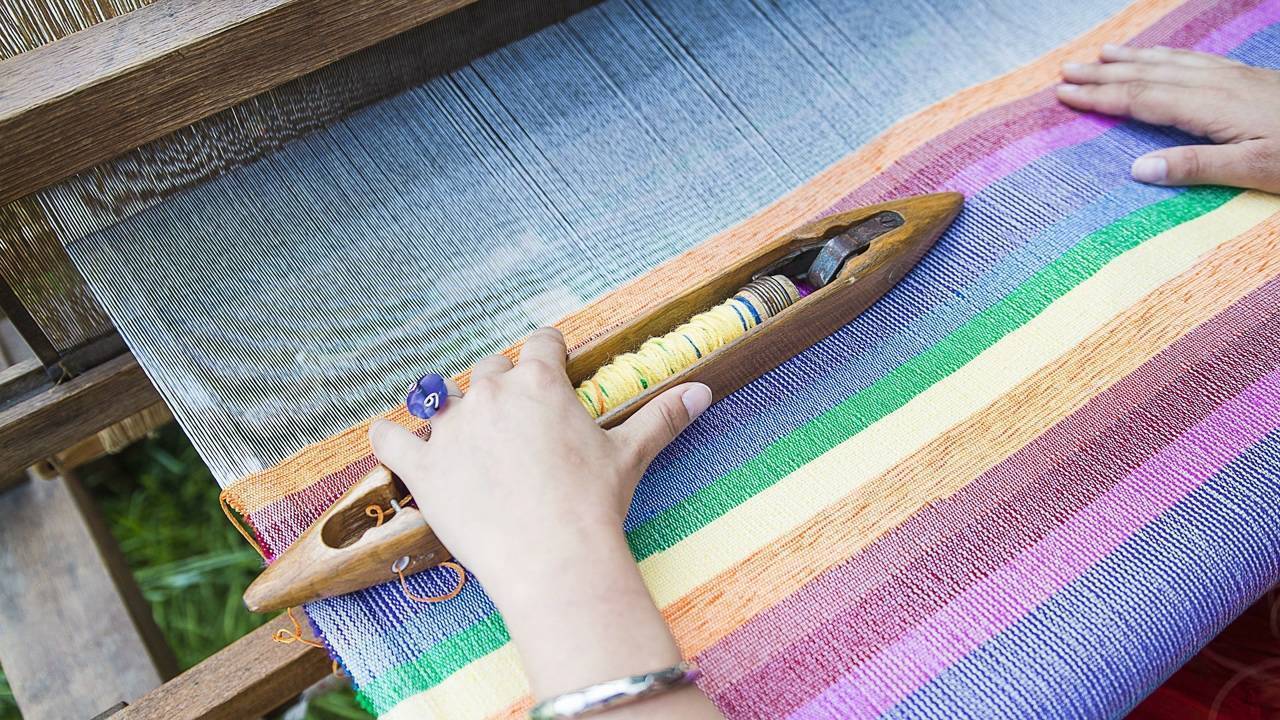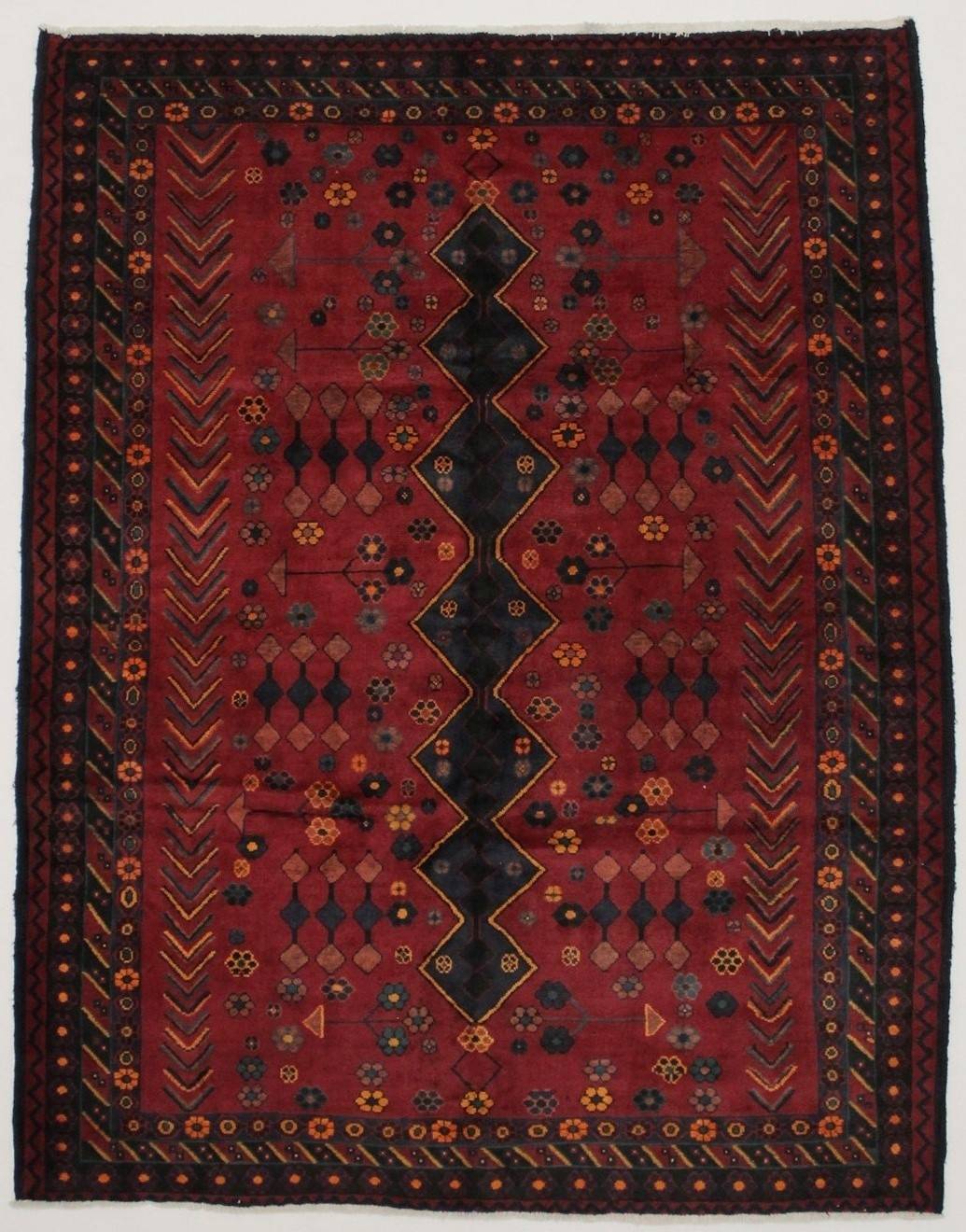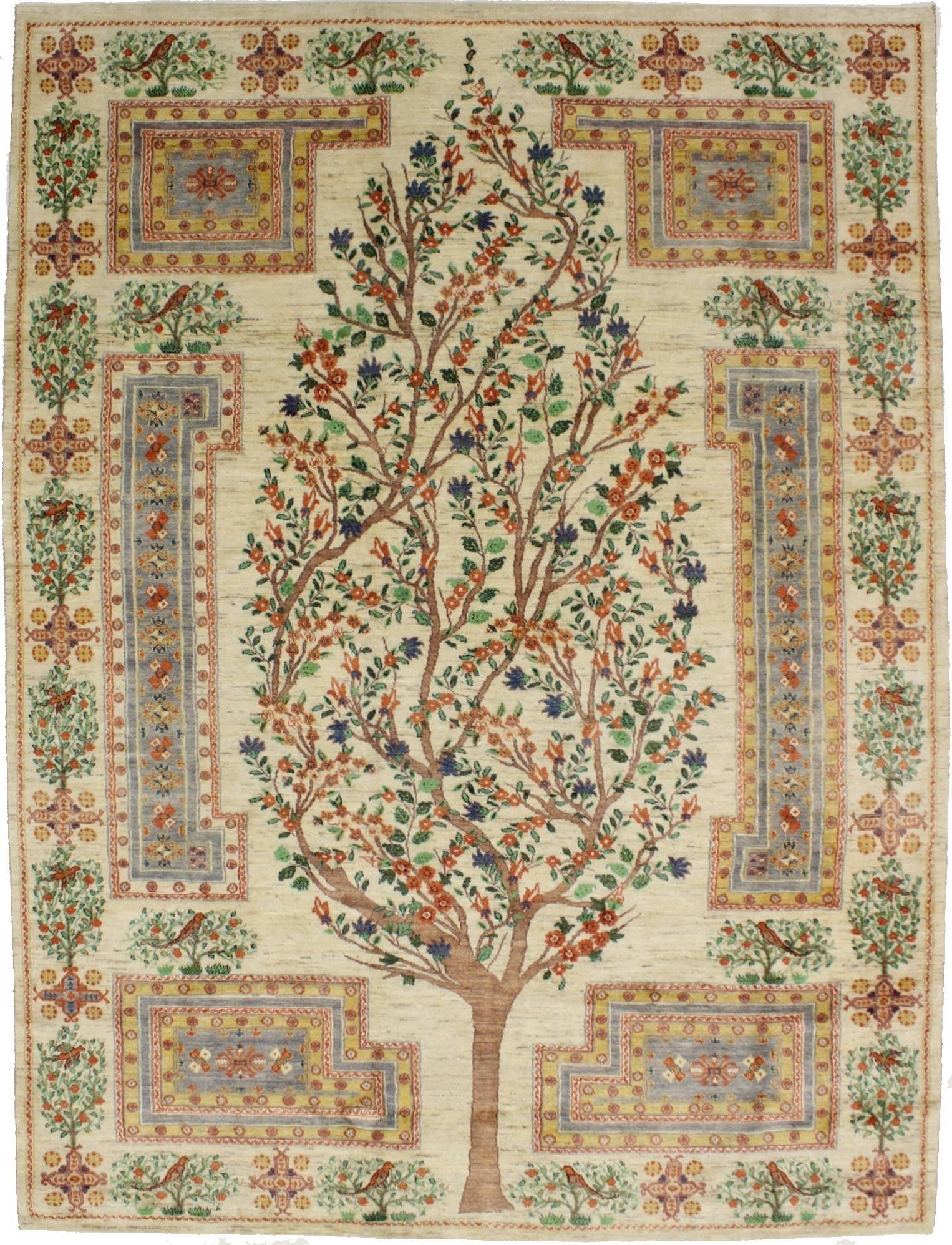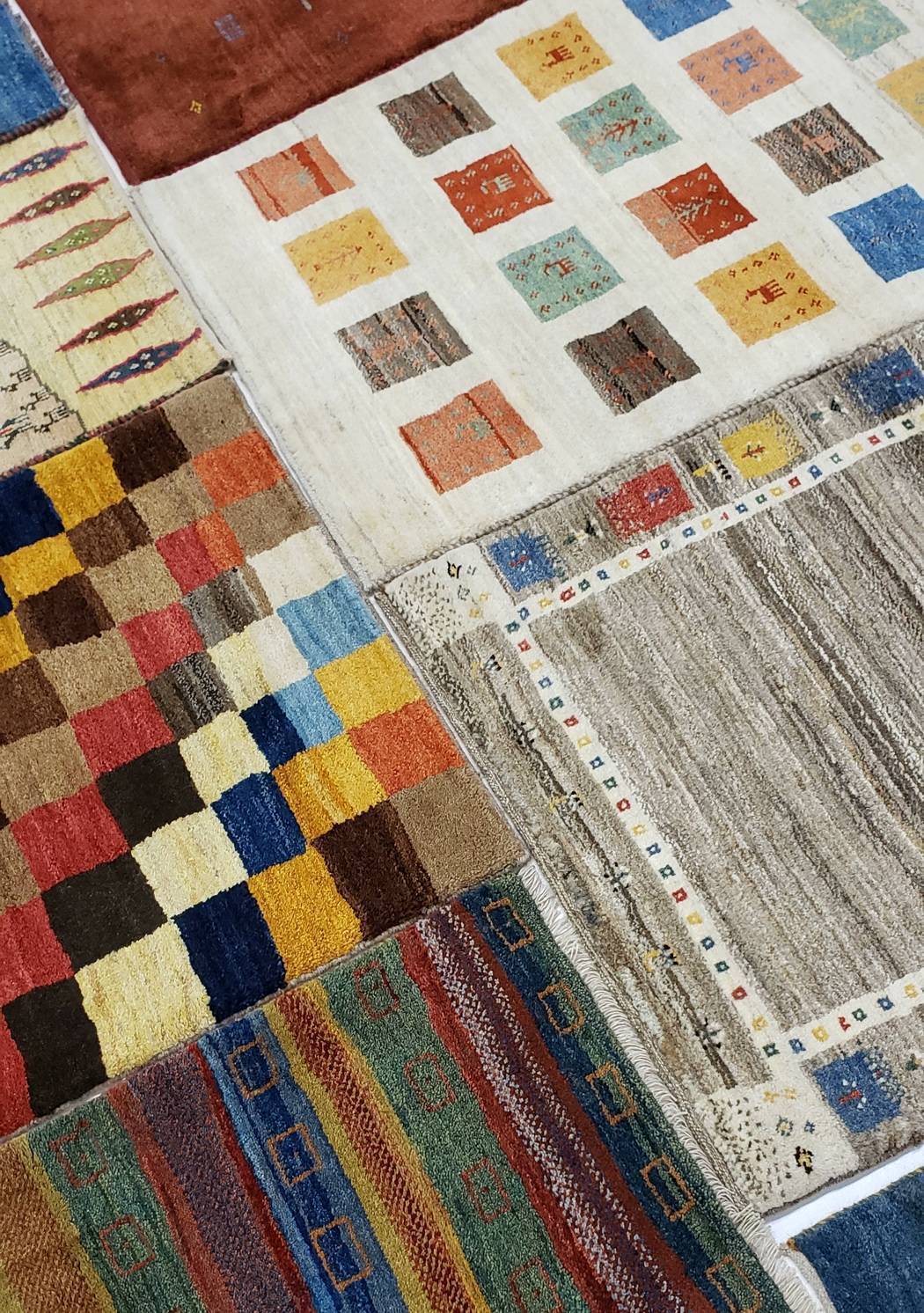These pieces are not merely decorative items but are pivotal in defining the ambiance, character, and aesthetic appeal o...
Design Traditions of Tribal Handmade Persian Area Rugs
Understanding Symbols, Colors, and Design Traditions of Tribal Handmade Persian Area Rugs
 Handmade Oriental Rugs are one of the most beautiful works of art. These are used for decorating floors in homes, offices, and other places throughout the world. Among handmade oriental rugs produced in various countries of Asia like Turkey, Iran, China, India, and Pakistan, tribal handmade Persian rugs of Iran are the most preferred by people due to their beauty, exquisite designs, and quality.
Handmade Oriental Rugs are one of the most beautiful works of art. These are used for decorating floors in homes, offices, and other places throughout the world. Among handmade oriental rugs produced in various countries of Asia like Turkey, Iran, China, India, and Pakistan, tribal handmade Persian rugs of Iran are the most preferred by people due to their beauty, exquisite designs, and quality.
Handmade Rug making tradition started in Iran (ancient Persia) centuries back when it was ruled by kings. Nomadic tribes like Qashqai, Bakhtiari, Lori, and others created these rugs from high-quality wool obtained from the sheep they grazed. As the tradition of rug making passed from one generation of weavers to the other, it was able to survive right up to this day.
 Mostly women of nomadic tribes create the Persian rugs. Weaving rugs is a time-consuming process that can take from a few months to several years to get completed. Persian rugs contain certain symbols that are associated with the religious beliefs of the tribes weaving them.
Mostly women of nomadic tribes create the Persian rugs. Weaving rugs is a time-consuming process that can take from a few months to several years to get completed. Persian rugs contain certain symbols that are associated with the religious beliefs of the tribes weaving them.
If you are thinking about getting a beautiful-looking and intricately designed tribal Persian area rug for your home, you should consider learning a bit more about the symbols, colors, and design traditions associated with tribal handmade Persian area rugs . Such knowledge will help you choose a suitable rug for your home which matches well with the other design elements at your place and satisfies perfectly the decoration needs of your house.
Let us first share with you knowledge about some of the symbols used in tribal Persian rugs.
Resting eagle: It represents the high-mindedness of the spirit.
Eagle in flight: This symbol depicts good fortune.
Cypress tree: It represents life after death.
Leopard: It symbolizes bravery.
Peony: It depicts power.
Parrot: It represents protection and escaping from danger.
Hunting dog: This symbol depicts honor and glory.
 Peacock: It symbolizes immortality or divine protection.
Peacock: It symbolizes immortality or divine protection.
Tree of Life: The tree of life depicts truth or understanding and a direct path from Earth to Heaven.
Lotus: It symbolizes immortality and rebirth.
Paradise Bird: It depicts heaven or paradise.
Lion: It represents power.
Iris: It symbolizes religious freedom.
Pomegranate: It depicts fertility.
Diamond: Two diamonds together represent a man and a woman.
Mihrab: It symbolizes the gateway to Paradise.
Comb: It represents cleanliness.
Nomadic weavers in Iran also use certain colors in the tribal handmade Persian area rugs created by them. The colors not only beautify the rugs made by them, but they also tell the bigger story that the weavers want to convey to the viewers.
Let us now know which are colors used in the tribal Persian rugs and what they depict.
 Green
Green
The green color is associated with harmony, balance, and growth. It depicts hope and new life as it is related to spring and the rebirth of nature. Green is not the most commonly applied hue in handmade Persian rugs, it is the most important one. For orthodox Muslims, green is considered a sacred color as it is associated with the Prophet Mohammed. According to Koran, emerald green was their favorite shade, Mohammed. So the weavers applied it with caution and only to the most magnificent rugs which would be least likely to be walked on.
Red
Red is the color of action, energy, confidence, and passion. It is perceived as a positive, warm and energizing shade that attracts attention, excites emotions, and inspires people to take action. It is the color of fire and blood. In Persian rugs, red color was applied pretty often as it could be relatively easily obtained by the artisans and provided wonderful effects. Moreover, it enabled them to highlight certain patterns or motifs in the rugs. The red color in Persian rugs invokes joy, happiness, wealth, courage, and a vibrant life force.
Blue
Blue is the color of responsibility, trust, loyalty, and honesty. After red and beige, it is one of the most commonly used colors in Persian rugs. The blue color in Persian rugs represents not only power but also solitude which is an allusion to the afterlife. It is quite often paired with those motifs that express hope for life after death.
Yellow and Gold
 Persian Culture is associated with the yellow color with radiance, the sun, and the joy of life. Gold which is a more toned shade of yellow mixed with brown represents wealth and power. It was sparingly used in Persian rugs and was usually reserved for rulers and royalty.
Persian Culture is associated with the yellow color with radiance, the sun, and the joy of life. Gold which is a more toned shade of yellow mixed with brown represents wealth and power. It was sparingly used in Persian rugs and was usually reserved for rulers and royalty.
Brown
Brown color represents soil and earth. In Persian rugs, it is a color of fertility.
Orange
Orange is a spiritual and meditational shade used in Persian rugs . It symbolizes devotion, humility, and piety.
White
White represents purity, innocence, and cleanliness.
Black
Black in Persian rugs depicts doom, destruction, and mourning.
Let us now share with you knowledge about the rug design traditions of various tribes in ancient Persia which have managed to survive right up to this day.
 Qashqai
Qashqai
Qashqai rugs are all-wool and they are usually with ivory warps. They employ asymmetrical knots. Madder red is the favorite color of weavers from the Qashqai tribe which is often mixed with pomegranate rind for obtaining darker hues.
The design pattern in Qashqai rugs consisted of a medallion shape which was filled with a myriad of irregular geometric elements like diamonds, rosettes, little guls, and stylized figurines. These elements were spread randomly across the field like amulets on a soothsayer’s table.
Gabbeh
Gabbeh rugs have designs that are normally asymmetric. Design patterns in Modern Gabbeh Rugs are very basic and consist mostly of rectangular objects that resemble mainly animals. These rugs are usually brightly colored and predominantly use yellow and red colors.
Luri

Rugs created by the Luri tribe have simple designs. These include all-over patterns of botehs , flowers, or lozenges. Luristan has a very ancient and influential tradition of weaving, and some of the most pervasive motifs used in the west and southwest Iranian weaving may have been derived from the ancient bronze work found in Luristan.
Bakhtiari
Almost all of the designs used in Bakhtiari rugs feature a central medallion. Bakhtiari rugs are known worldwide for their famous garden design. It is a geometric pattern that depicts panels incorporating trees and plants divided by irrigation channels.
The symbols, colors, and design traditions of tribal handmade Persian area rugs will help you gain a good understanding of these rugs. This will eventually make it easier for you to choose the perfect rug for decorating your place.
Whether you want to procure a vintage Persian rug or modern and affordable Persian Rugs for decorating your home, you can get them from Magic Rugs. This leading Charlotte-based rug store offers a wide collection of high-quality, beautiful, and exquisitely designed tribal handmade Persian area rugs . They will be able to enhance the beauty and appeal of your place and let you leave a great impression on your guests and visitors.
Explore more trending collections!
Share:




